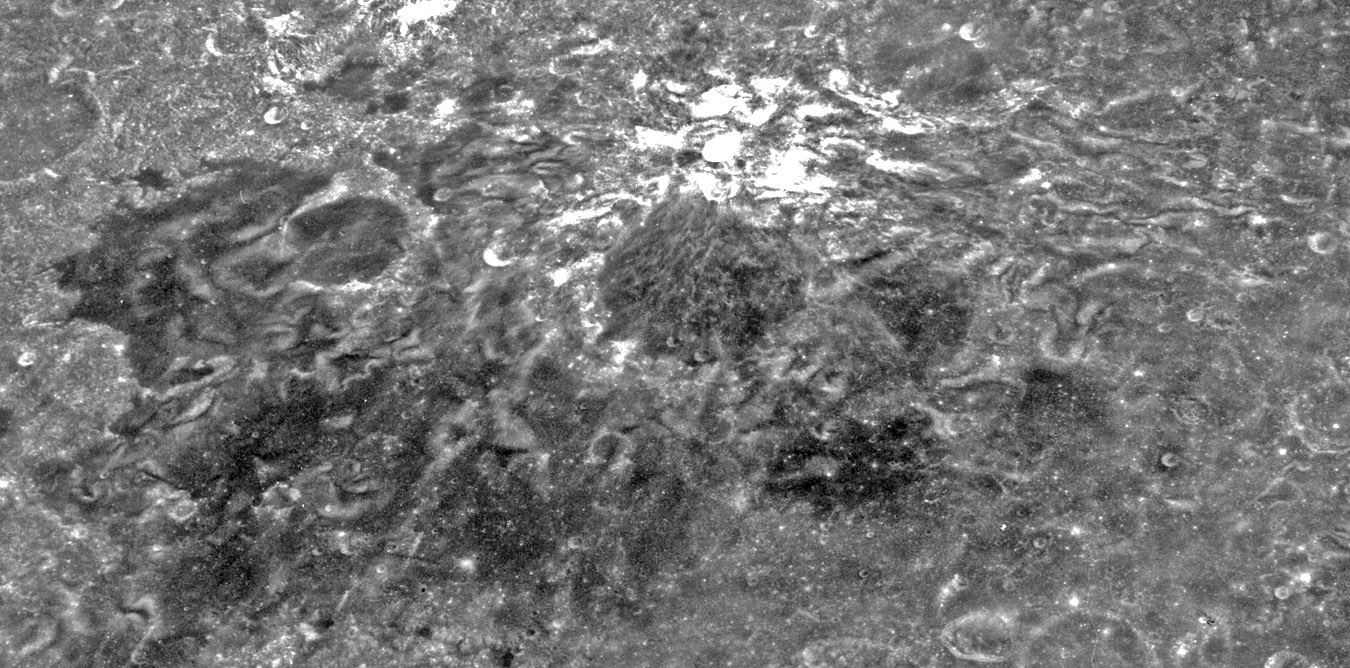December 25, 2010
Swirled Up with Christmas

Apollo 8 image AS08-12-2208 from " rel="nofollow Apollo 8 Flight Journal
Christmas day, 1968, the first humans from Earth orbited the Moon, being amazed by all they saw. The Apollo 8 commander Frank Borman actually had to be tell crewmates Jim Lovell and Bill Anders to stop looking out the window and get some sleep. Nonetheless, they all managed to take hundreds of images of targets of opportunity - features that captured their interest as they flew over the lunar surface. This view is one of the first of a swirl other than the famous Reiner Gamma. This feature is just visible from Earth when the libration and lighting are right. The dark floored crater at center is Goddard, and the nearby dark material is Mare Marginis. This is a very complex swirl with different characteristics in different parts. To the west the swirls have a bulbous pattern, with dark lanes often cutting their centers; this is a typical variety of swirls. To the east the swirls are completely different, looking more like vaguely twisted bright streaks, bounded by narrow dark lanes. These swirls - and some similar ones to the west - seem to be centered on and radial to the over-exposed bright crater Goddard A. This led Pete Schultz to propose that Goddard A was formed by a comet impact, with the roughly radial swirls being associated with its ejecta. But this entire swirl field is antipodal to the Orientale Basin, suggesting that the swirls are related to that giant impact. And like all other swirls, this one coincides with a locally strong magnetic field. The most widely accepted view is that the basin-forming impacts somehow create and concentrate magnetic anomalies on the opposite side of the Moon, and that these fields repel solar wind that would normally darken originally bright regolith. In this case the swirls map out fine details of the magnetic field frozen into the Moon. I see two problems with this idea - why are swirled maria bright, and why do swirls on highlands have dark lanes? In both cases the albedo is opposite to what occurs elsewhere - maria are dark and highlands are bright.
" rel="nofollow Chuck Wood
Related Links
Rükl plate 27
Dave Blewitt Powerpoint " rel="nofollow presentation
Lunar swirls " rel="nofollow update
LROC " rel="nofollow view



